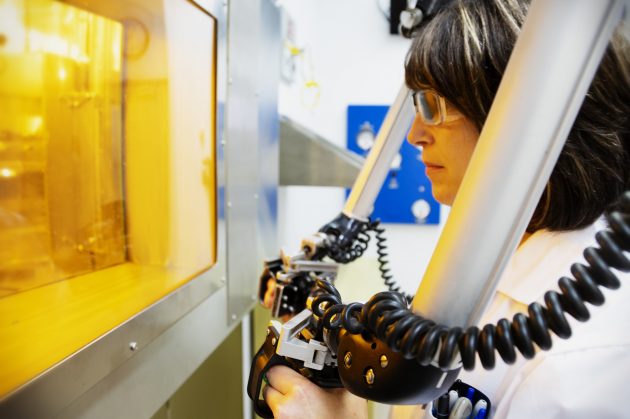
OPG and BWXT progress in production of medical isotope at Darlington Nuclear Station
by CM Staff

Darlington to become first large-scale nuclear station to produce molybdenum-99

BWXT nuclear medicine technicians utilize robotic manipulators and specialized equipment to process medical isotopes. (Ontario Power Generation Inc.)
PETERBOROUGH, Ont. — Ontario Power Generation (OPG), its subsidiary Laurentis Energy Partners (Laurentis), BWXT ITG Canada Inc. and its affiliates (BWXT) are making progress toward the production of molybdenum-99 (Mo-99) at OPG’s Darlington Nuclear Generating Station.
Mo-99 is a medical isotope used in over 40 million procedures a year to detect cancers and diagnose various medical conditions.
Over the past 24 months, a team of more than 100 personnel at BWXT and Laurentis designed specialized tooling at BWXT’s facility in Peterborough to enable the production of Mo-99 at Darlington. The manufacturing of this specialized tooling is currently underway at the same BWXT facility in Peterborough.
BWXT has also built a fabrication facility at its current location in Peterborough to produce Mo-99 components that will be delivered by the specialized tooling, which will be installed at Darlington.
“This advanced equipment is an example of how Laurentis is maximizing decades of experience within the nuclear industry for the delivery of innovative solutions,” said Dominique Minière, president of Laurentis Energy Partners, in a prepared statement. “These milestones represent a considerable step forward in the implementation of this industry-leading technology.”
“We are leveraging BWXT’s broad capabilities to design, manufacture, install and service reactor technology in order to support the launch of this innovative solution in partnership with Laurentis,” said John MacQuarrie, president of BWXT Canada Ltd. “Together, we have made tremendous progress towards the production of this crucial medical isotope that is used in more than 80 per cent of all nuclear medicine procedures.”